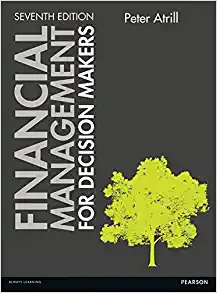Question
Company X is currently all-equity financed and has no cash on hand. The company has assets in place and a single investment opportunity. The value
Company X is currently all-equity financed and has no cash on hand. The company has assets in place and a single investment opportunity. The value of the assets in place depends on whether a recent cost-cutting initiative at the company was successful or not. Assets in place are worth $16M if the initiative was successful and $12M if it was unsuccessful. The CEO of the company knows for sure whether the cost-cutting initiative was successful or not, but investors in the market do not. Investors believe that there is a 50% chance that it was successful and a 50% chance that it was unsuccessful. The company's investment opportunity entails investing $8M today, which will generate future cash flows with a present value of $12M (so the NPV of the project is $4,000).
2a) Suppose that you, as a CEO, care only about maximizing the value of current shareholders' claims. Regarding how you finance the project, you have the following choices:
i) Do nothing (i.e., don't invest)
ii) Issue debt (Assume that issuing debt, due to potential distress costs, reduces the value of the issuer by $8M, even if the company does not actually default)
iii) Issue equity
If you were the CEO of Company X, which one of these would you choose if you knew that the cost-cutting initiative was successful, and why? Which one would you choose if you knew the cost-cutting initiative was unsuccessful, and why?
Hint: Notice that the company has a highly profitable growth opportunity and that the financial distress costs are quite high. In this case, the market is likely to expect that the company would issue equity even if its cost-cutting initiative was successful (rather than passing up the project or
issuing debt, which will generate financial distress costs). Hence, the market will price equity issues as coming from an average "type" (i.e., investors expect the company to issue equity whether its cost-cutting was successful or not).
2b) Suppose that everything is exactly the same as in part (a), except that the distress costs are $80,000 instead of $8M. If you were the CEO of Company X, which one of the three options would you choose if you knew that the cost-cutting initiative was successful, and why? Which one would you choose if you knew the cost-cutting initiative was unsuccessful, and why?
Hint: Notice that the company still has a highly profitable growth opportunity in this case, but the financial distress costs are quite small. In this case, the market is likely to expect the company to finance the project by issuing debt rather than selling undervalued equity if its cost-cutting initiative was successful. Hence, the market will price equity issues as coming from a company that had an unsuccessful cost-cutting initiative.
2c) Suppose the company has 1M shares outstanding. Compute the change in the price of the shares if the company issues equity in the scenarios described in (a) and (b) and explain the difference.
Step by Step Solution
There are 3 Steps involved in it
Step: 1

Get Instant Access to Expert-Tailored Solutions
See step-by-step solutions with expert insights and AI powered tools for academic success
Step: 2

Step: 3

Ace Your Homework with AI
Get the answers you need in no time with our AI-driven, step-by-step assistance
Get Started


